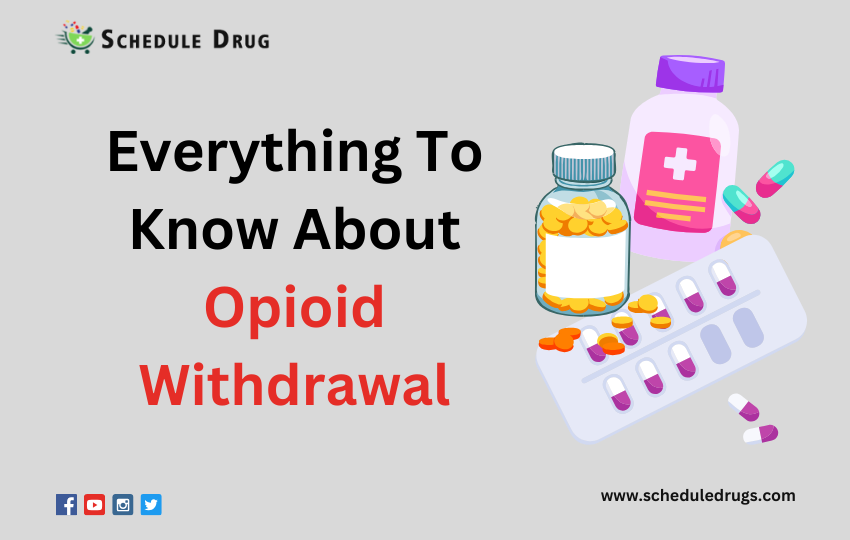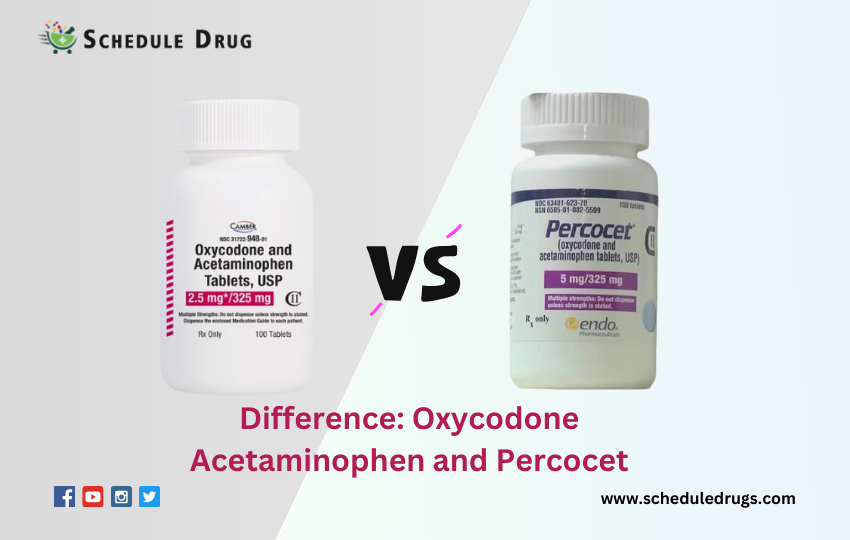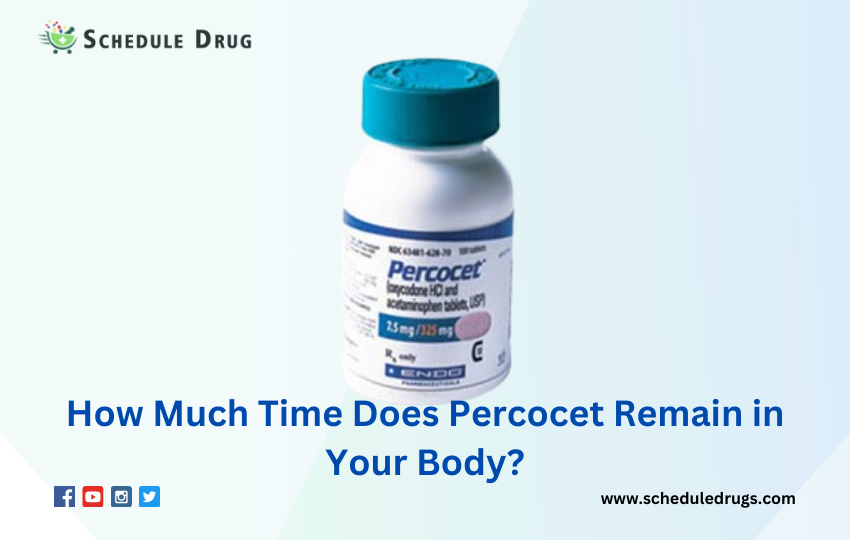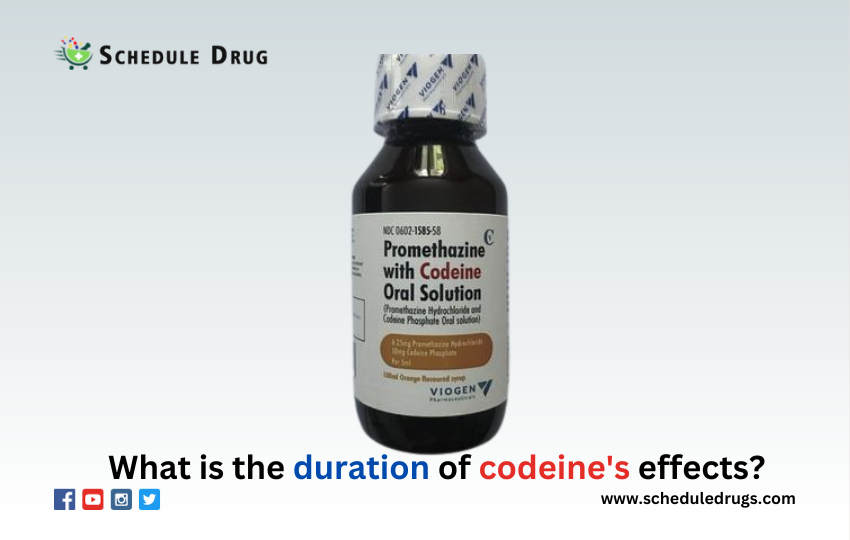Everything To Know About Opioid Withdrawal
Opioid-based pain medications are among the most popular drugs that help manage pain. Often doctors prescribe these opioid pain medicines to people with moderate to severe pain, and they are also helpful for those having chronic pain. These opiates are potent pain relievers and are habit-forming over prolonged use. The surge in opiate use in the United States has become a concern in the past few years, and the number of people experiencing opioid withdrawal has also risen significantly. Here you know about opioid withdrawal.
Opioids or narcotic medications are from a class of drugs that doctors commonly prescribe to manage pain. The category of opioid medicines includes both opiates and synthetic opioids—Opiates consist of medications derived from the opium poppy that includes heroin, opium, codeine, and morphine. Oxycodone, hydrocodone, and methadone are some examples of synthetic opioids that work similarly to opiates.
Popular prescription opioids include:
What is opioid withdrawal?
Though opioids are beneficial in relieving pain, they can make a person build physical or psychological dependence that can quickly turn into an addiction. The National Institute on Drug Abuse estimates that nearly 2.1 million Americans abuse opioids. People who misuse these drugs are at higher risk of facing withdrawal effects.
Withdrawal effects are nothing but the adverse effects a person might get when they stop or significantly reduce opioid intake. These effects can manifest in both physical and psychological forms and substantially affect those who were using these medicines for an extended period. Consuming opioids for a prolonged period can significantly change several of your body functions. The withdrawal symptoms result from your body adjusting to working without the presence of opioids in the system.
You can experience opioid withdrawal symptoms that can be mild, moderate, moderately severe, or severe. It depends on the duration and high dose of opioids you were taking before you stop consuming them. A doctor can determine the opioid withdrawal level using the Clinical Opiate Withdrawal Scale to suggest an appropriate remedy for your problem.
What effects do opioids have on the body?
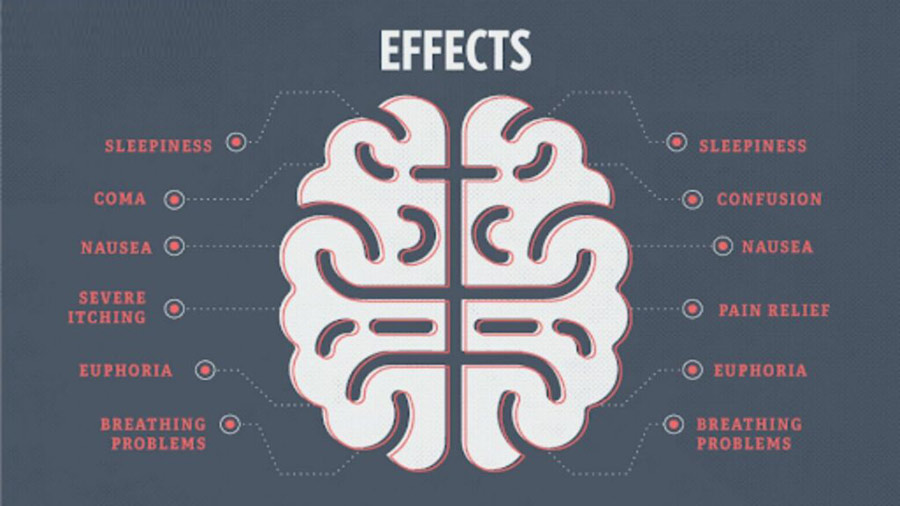
Opioid pain medications work by altering the brain’s functioning. Once consumed, the medicine reaches the brain and spinal cord and attaches to the mu-opioid receptors. The human body produces opioids naturally in small quantities to decrease pain, lower respiratory rate, and even fight anxiety and depression.
While your brain produces its opioids, it does not make them in such quantities required to manage the pain caused by a broken bone or muscle injury. The opioid drugs you consume bind to the receptors and replicate the naturally produced substance’s enhanced effects. Also, you cannot get overdone on the opioid that you brian-created opioids. But, the supplements or medications always carry the risk of an overdose, which can be fatal.
Narcotics can affect the body in the following ways:
- They can reduce pain by affecting the spinal cord to block the body’s sings from reaching the brain.
- These drugs can affect the brainstem that is responsible for controlling essential body functions like heartbeat and breathing.
- These medicines can reduce coughing by slowing breathing down.
- Opioids can also interfere with a specific brain portion called the limbic system that controls emotions. By altering it, these medications can produce a feeling of pleasure and relaxation.
- These medications can also affect certain neurotransmitters’ functioning to prevent the brain from correctly processing the pain signals coming from the body, making the user experience as if they are not experiencing any pain.
What causes opioid withdrawal?
Extended use of opioids can alter the way nerve receptors work. These receptors that are present in the brain become dependent on the medication to function correctly. People using these drugs for long periods become physically sick if they abruptly stop consuming them. The sudden occurrence of undesirable symptoms indicates a person’s physical or psychological dependence on this drug. The withdrawal symptoms are the body’s response to the lack of opioids in the system.
When people use opioid pain medications for a prolonged time, their body becomes opioid-tolerant, meaning that they require more and more of the medication to achieve the same effect after a particular time. It can be dangerous as with the increase in the dosage, the risk of an accidental and fatal overdose also increases.
The withdrawal symptoms also make it hard for a person to recover from opioid addiction. People addicted to these drugs keep on consuming them to prevent experiencing the withdrawal symptom, which results in more extended use worsening the addiction even further.
What are the symptoms of opioid withdrawal?
The opioid withdrawal symptoms a person experience depends on the level of withdrawal they are facing. Various factors can also influence how long someone experiences withdrawal symptoms. The intensity and duration of withdrawal symptoms vary from person to person, and not everyone feels the same effects.
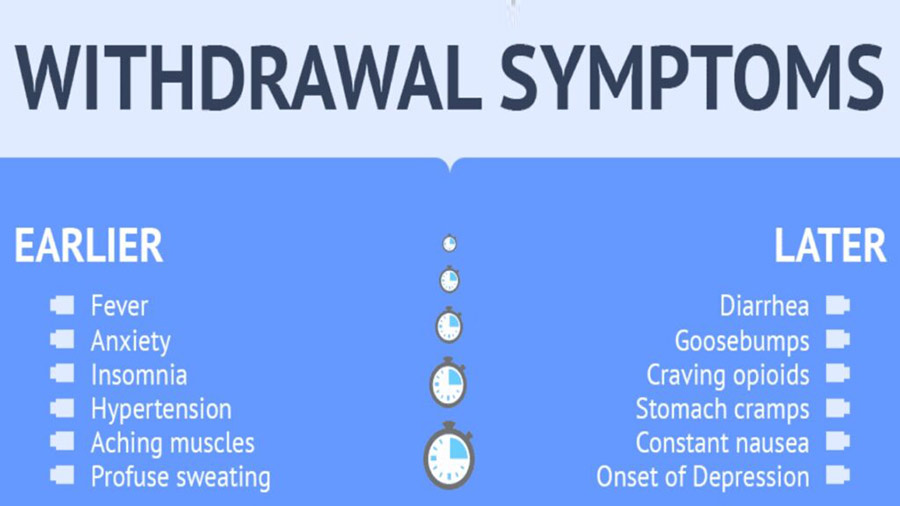
The typical withdrawal symptoms progression timeline looks like the following:
The early symptoms occur in the first 24 hours once you stop consuming the medicine; these include:
- Excessive yawning
- Inability to sleep
- Excessive sweating
- Runny nose
- Tearing up of eyes
- Anxiety
- Restlessness
- Muscle aches
Later, the symptoms intensify. After the first day, more intense effects start to pop up; these include:
- High blood pressure
- Rapid heartbeat
- Dilated pupils
- Blurry vision
- Vomiting and nausea
- Goosebumps
- Abdominal cramping
- Diarrhea
While the symptoms start as very painful and unpleasant, they usually begin to improve and fall in intensity within 72 hours. People experience a significant decrease in opioid withdrawal symptoms after a week from stopping the drug’s consumption.
Newborns of the mothers who use opioids during pregnancy can often show the following withdrawal symptoms:
- Seizures
- Vomiting
- Dehydration
- Poor feeding
- Digestive problems
People should also remember that different medications remain in the body for a different duration, and that can affect how much time it will take for the onset of withdrawal effects. The use frequency and use severity of addiction can also affect how long the symptoms will last.
Illicit drugs like heroin usually get eliminated from the body faster, and their withdrawal symptoms start to occur within 12 hours of use. In contrast, prescription medications like methadone take longer to leave the system, and their symptoms usually start to show up after a day and a half. According to experts, you will need six months of restraining before you can fully recover from opioid addiction.
How is opioid withdrawal diagnosed?
The primary health care provider can perform a physical examination and ask questions about the withdrawal symptoms to diagnose opioid withdrawal. The doctor might also want you to take a blood or urine test to determine the opioid substance in your body.
They can ask you questions about past drug use and abuse and your medical history. Try to answer these questions truthfully and openly to get the best support and treatment required to ease your condition.
What treatments are available for opioid withdrawal?
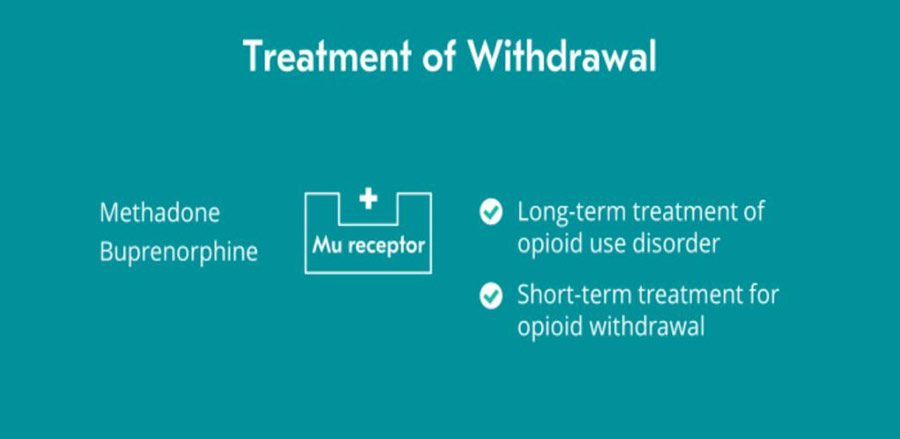
Facing opioid withdrawal is an uncomfortable situation to be in, and many people don’t want to experience these terrible symptoms. People often continue taking these medicines to prevent withdrawal symptoms from occurring, but that only worsens the eventual symptoms. Some try to manage the withdrawal process on their own, which is not advisable. Seeking proper medical treatment in a controlled environment can lead to a greater chance of success and make people more comfortable.
For mild symptoms, doctors use acetaminophen, aspirin, or non-steroidal anti-inflammatory drugs (NSAIDs) like ibuprofen. Taking the required rest and drinking plenty of fluids is also essential to aid the recovery process. Medications like loperamide can help manage diarrhea, and Vistaril or Atarax can reduce nausea.
You might require hospitalization if you experience more intense symptoms. One of the prevalent inpatient medications is codeine that can help reduce the withdrawal symptoms intensity by 50% to 70%. This medicine is especially helpful against the following symptoms:
- Runny nose
- Tears
- Sweating
- Restlessness
- Muscle aches
- Cramping
- Anxiety
Suboxone is another medicine helpful in controlling opioid withdrawal effects. It is a combination of buprenorphine (opioid) and naloxone (opioid blocker) that can suppress the unpleasant effects without causing a person to become dependent. When taken orally, this drug combination can work to reduce withdrawal symptoms, and it also decreases the intensity and duration of the detoxification process.
Doctors can prescribe methadone as long-term maintenance therapy. While it is a potent opioid, doctors can reduce it in a controlled manner to minimize the risk of intense withdrawal effects.
There is also rapid detoxification that doctors rarely use. Under this patient receives anesthesia with opioid blockers like naloxone. Some evidence shows this method decrease symptoms but doesn’t reduce the time a person has to spend in withdrawal. Also, vomiting often happens during treatment, and the potential of vomiting under anesthesia effects can significantly increase the risk of death. Most doctors don’t use the rapid detoxification method because the risk is far more than the benefits.
What are the complications of opioid withdrawal?
Several complications can occur when a person is going through opioid withdrawal. The level of complications depends on the intensity of withdrawal symptoms.
Vomiting and nausea are among the prominent symptoms of withdrawal. Accidental breathing of vomited material into the lings can result in a severe complication, as it can result in the development of aspiration pneumonia.
Another painful and potentially dangerous symptom is diarrhea. The loss of electrolytes and fluids can make the heartbeat abnormal. The irregular rhythm of the heart can cause circulatory problems and heart attacks. Replacing fluids lost because of diarrhea and vomiting is essential to prevent this complication.
Muscle cramps and joint pain can also be a part of opioid withdrawal symptoms, and nausea can also remain present and make you uncomfortable through the entire process of recovering.
The healthcare provider can work with the patient to provide them with some medicines to reduce the risk of severe complications.
What to expect in the long term?
It is not advisable to stop using the prescribed opioid medication without consulting a doctor. But, if you stop using these drugs and end up facing withdrawal symptoms, your best option is to see a professional as soon as possible. The doctor can help you manage the withdrawal symptoms and adjust your dosage to give you immediate relief.
Getting professional help for opioid addiction can improve your overall health and reduce your risk of accidental overdose, relapse, and other opioid addiction complications. If you become dependent on your prescription medication, talk to your healthcare provider about available treatment programs and support groups. The discomfort and pain of withdrawal symptoms are a small price to pay for the overall health improvement you will get from seeking treatment.
